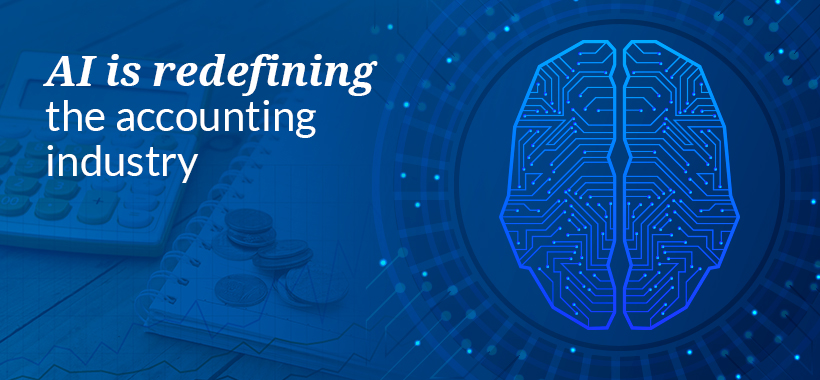Topics:
How artificial intelligence is redefining the accounting industry – An overview
Posted on July 10, 2018
Written By
QX Global Group

When I think of Artificial Intelligence, I imagine a horde of robots doing some of the most critical tasks in the world. We all know the impact of AI is going to be massive. In fact, the disruption is visible in industries across the globe including finance, energy, healthcare, education, manufacturing, and communications.
Doctors, lawyers and yes, accountants are set to feel the change. Don’t be surprised to see a robot, instead of your GP, doing your annual checkup or a highly advanced computer algorithm sorting out your taxes for you in the coming years.
Due to the lack of understanding about AI, most organizations believe millions of jobs, as we know them today, will end. According to IDC, robot imports around the globe increased to around 250,000 in 2015 from 100,000 in 2000.
Speaking strictly of the accounting industry, the consensus of a FreeAgent’s report is 96% of accountants believe either all or some of the accounting jobs will get automated by 2022. I agree AI will bring about an evolutionary change to the way we work. But I don’t think it will render accountants out of jobs!
AI is redefining the accounting industry.
Okay, let us be honest. Accountants haven’t indeed witnessed much innovation apart from the creation of double-entry bookkeeping. And boy, did that save them time and energy! But by 2020, tasks such as payroll, filing taxes, auditing will be automated through AI-based technologies.
While automation is just one aspect of AI, there are other uses of technology that will impact an accountant’s job, positively.
1) Planning and strategic consulting
AI is now offering capabilities for automating data entry, reconciliations, and more. If a machine could finish all the tedious, repetitive and time-consuming jobs that would enable accountants to move towards an advisory role and focus on providing higher value service to their clients.
2) Data review rather than data entry
AI has enabled data to be handled and processed thoroughly. Accounting professionals can acquire fast and reliable data in every tax report they generate quickly. No wonder, they don’t waste their entering data into the systems anymore. They can spend time reviewing it and offering better accuracy in the process.
3) Deeper employee engagement
AI can empower your accounting staff by finding those jobs they find more enjoyable. Recruitment and retention won’t be an issue when machine-intensive processes take over the accounting industry.
What are the Big Two up to?
PwC and EY have already joined the AI bandwagon and how! PwC has created its own AI tool called GL.ai which helps identify anomalies in a business’ general ledger. The PwC team trained the tool combining over 1 billion journals with advanced algorithms to be able to analyze billions of data points in milliseconds.
And EY recently applied the technology of AI to their lease accounting process. The use of machine-intensive technology has helped them to streamline the data captured from contracts after identifying relevant sections for accounting treatment.
What your accounting practice should do
Access to technology isn’t an issue for any firm. The principal obstacles are finding the right skills in-house and being prepared for it. Here are a few instructions you should follow if you want to make the most out of the AI technologies.
1) Start small, like really small
It is great to think big. But to achieve goals around AI, it is imperative to start small. Scale up your AI capabilities only when you know where you stand concerning technology.
2) Ensure the team is ready to embrace new technology
AI means new ways of working for everyone. Whether the employee is 50 years old or a newbie – he or she should be able to work with technology like a pro; this requires consistently acquiring new skills and embracing a career which involves life-long learning. Are you up for it?
3) Don’t forecast
Take ONLY those decisions today that will increase the probability of your client in achieving their goals. Advisers like you should help your clients in arriving at data-driven decisions, considering the complexity of running a business and the uncertainty of working in a dynamic industry like finance and accounting.
4) Keep your clients in the center
Take a moment to recollect how your clients consume services. Now, the consumer pattern could and will change in the coming years. Imagine how your AI-driven services could help at a time when communication would be majorly virtual.
5) Measure success
You have to be very sure of what you want to achieve in the next five or ten years. Use that as a definition of your success and then do an after-action review when you reach that timescale.
Closing thoughts
The value of AI is expected to touch $400bn by 2020. It is real, and it is happening. But will AI eliminate jobs will or merely evolve them into something more significant? I’d go with the latter!
Originally published Jul 10, 2018 12:07:32, updated Jul 05 2021
Topics:








